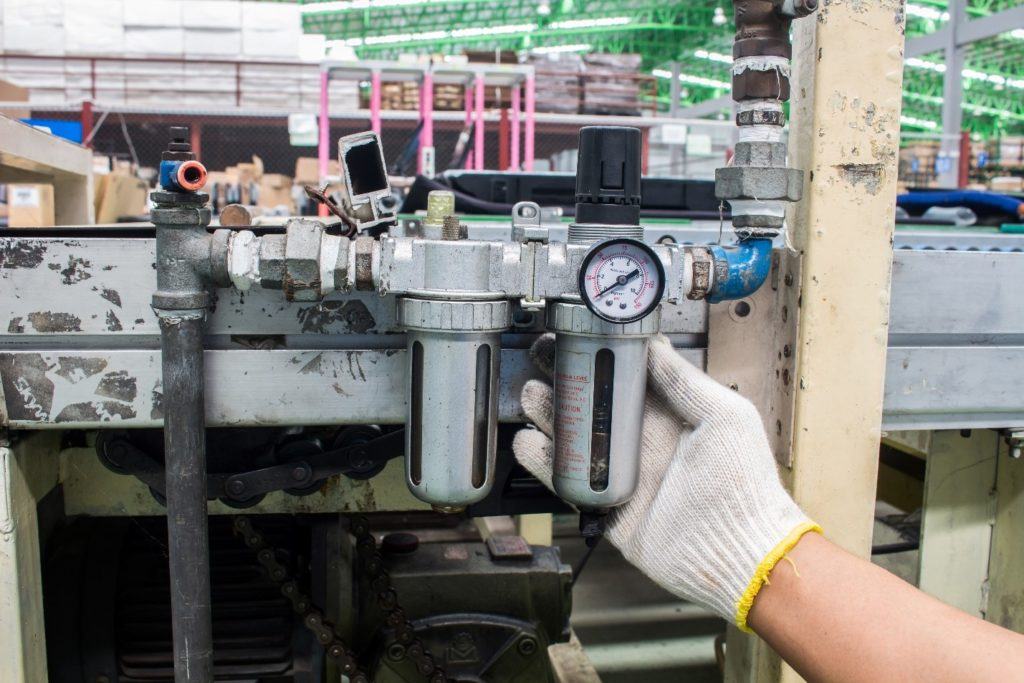Leaks are a significant source of wasted energy in a compressed air system and, if left unchecked, can account for half of a system’s operating capacity or more. Since these leaks don’t fix themselves, they are present 100% of the time during operating hours.

Ultimately, compressed air leaks hit a company’s bottom line when you look at the operational costs associated with them. Here’s what to know about this type of air leak, how to identify these leaks and — most important — how to fix them.
Compressed Air Is Expensive
Not only is compressed air expensive, but it’s likely your most expensive source of power. A compressor turns electrical power into stored mechanical energy (work in) and the end use turns the stored mechanical energy into work (work out). The efficiency of a typical compressed air system is about 13%.
Know Your Unit Costs of Compressed Air
The cost of one cubic foot per minute (cfm) of compressed air is highly dependent on a system’s operating hours and the compressor controls. Inlet modulating compressors can make one more cfm at a very minimal cost while variable-speed drive compressors save money on every cfm saved. On/off compressors have the highest incremental costs and savings. You can determine flow and cost by measuring compressor energy use over time but a good rule of thumb is $100 per cfm.
Identify Air Leaks
Common places to find air leaks are quick-connect fittings, push-to-connect fittings, cuts or pinholes in the hoses, threaded fittings and pneumatic tools. Another important area of focus for leak detection is the “dirty thirty”, which is the last bit of compressed air piping that connects the end use pneumatic equipment to the compressed air header. This piping is usually 30 feet long and often has a 30, 40 or 50 psi drop in pressure
Two places to not search for leaks are the internal seals of the air cylinders and the main header pipes. Air cylinder internal seals do leak but the cost to fix them will likely outweigh the ongoing costs of the leak. Main header leaks are uncommon but when they do happen, they are usually huge leaks that impact the ability to even run the compressor.
How to Fix Leaks
According to Ron Marshall from the Compressed Air Challenge, air leaks happen mostly at joints and connections at end-use applications. Eliminating a leak can be as simple as tightening a connection or as complex as replacing faulty equipment such as couplings, fittings, pipe sections, hoses, joints, drains, and traps. Most of the time leaks are caused by faulty or improperly applied thread sealant. Choosing high quality fittings, disconnects, hoses, tubing, and installing them properly with appropriate thread sealant is very important in avoiding future leaks.
Also, non-operating equipment can be an additional source of leaks. Equipment no longer in use should be isolated with a valve in the distribution system.
Establish a Leak Prevention Program
A good leak prevention program will include identification (including tagging), tracking, repair, verification, and employee involvement. Any facility with a compressed air system should establish an aggressive leak reduction program in order to maintain the efficiency, reliability, stability and cost effectiveness of any compressed air system.
